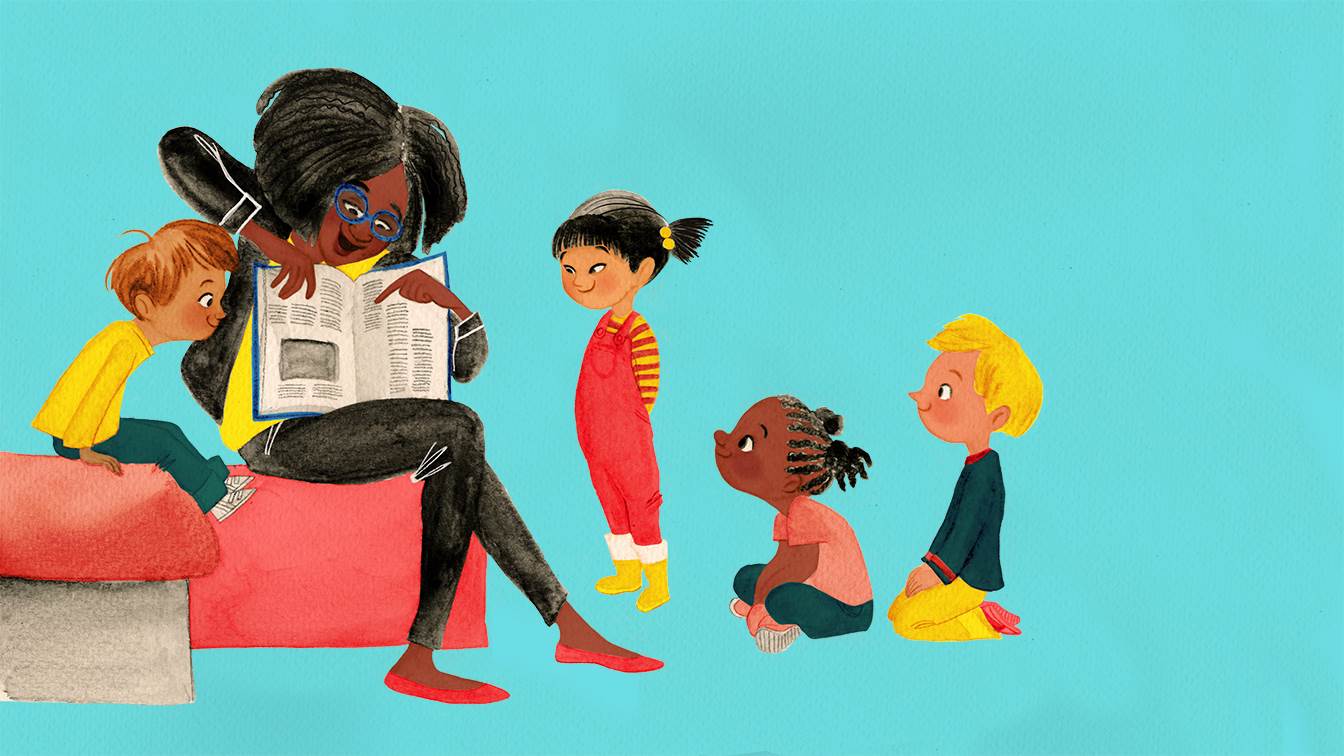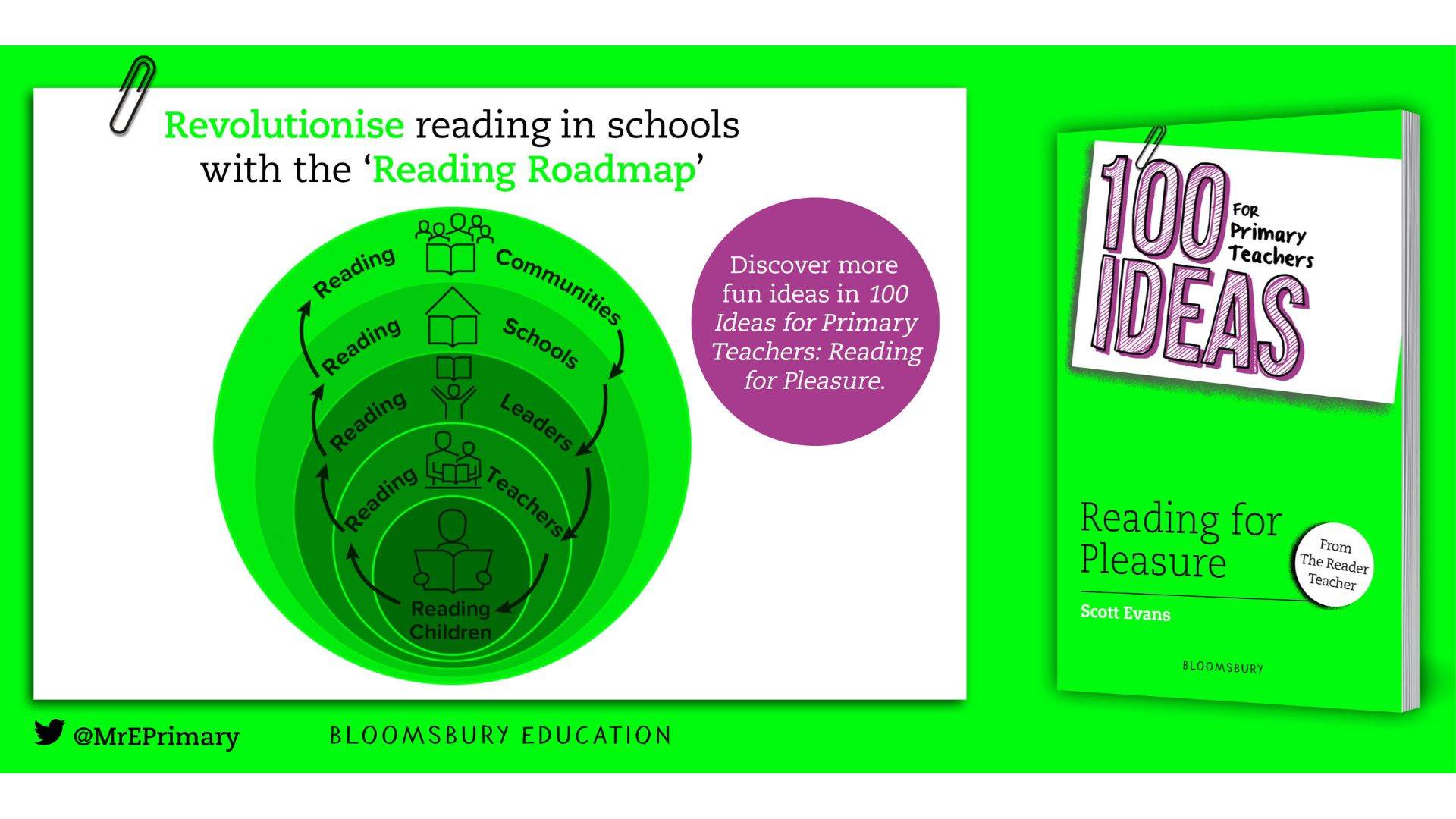Top tips to get children reading for pleasure in your classroom
Published on: 13 April 2023
Teacher and former librarian Scott Evans, the Reader Teacher, shares some ways to encourage a love of reading in your school.
 Illustration: Erika Meza
Illustration: Erika Meza
As a primary school teacher, it's a privilege to witness the moments in the classroom when children fall in love with reading.
The excitement that lights up their eyes as they lose themselves in the pages of a book and discover the magic of reading is indescribable. It's times like these that ignite our passion and fuel our drive to do everything we can to inspire and cultivate a love of reading in each and every child we teach.
However, fostering a love of reading can be challenging, especially considering recent research which indicates that reading for pleasure among children is currently at its lowest level in eighteen years.
That's why I wrote my book, 100 Ideas for Primary Teachers: Reading for Pleasure, which draws on all of my experience as a primary school teacher, educational consultant, former librarian and book award judge to provide primary teachers with one hundred practical and proven ideas to promote reading for pleasure in their schools. At the heart of my book lies the 'Reading Roadmap' – a five-point framework that forms the foundation for all the ideas presented and provides an effective, thoughtful and intentional approach to raising reading children, teachers, leaders, schools and communities alike.
At the heart of my book lies the 'Reading Roadmap' – a five-point framework that forms the foundation for all the ideas presented and provides an effective, thoughtful and intentional approach to raising reading children, teachers, leaders, schools and communities alike.
Designed as a recurring process, it starts by setting the stage for children and connecting them to reading in ways that resonate with them. It then extends to embrace the wider community, before trickling back down to impact the children once again. As each subsequent element builds upon the former and influences the following, a powerful cycle is created, empowering teachers to establish a strong and sustainable culture of reading for pleasure.
I'd love to share all one hundred ideas with you in this article but trying to squeeze all of them in would be like trying to fit an elephant into a carry-on suitcase. But don't worry, I've done the heavy lifting for you and handpicked five of my favourite tips from the book that I think will rock your reading world...
Children’s Choice
Encouraging pupil voices in reading can be revolutionary. Create a culture of choice by setting up a voting station for children to select the class book. Display a range of nominated books and discuss them before asking them to pick the one they want to win. Make voting age-appropriate and inclusive by using different methods such as counters, baskets, tally charts and online polling technology. Return the runners-up to the classroom collection so children can read them later. This can help them to take ownership of what they read, become respectful readers and understand decision-making and democracy in action through their choice and voice.
Recognise All Reading
We're fortunate to live in a golden age of children's literature where it’s more diverse and inclusive than ever before, and it's incredibly important to expose children to this range of books. A balanced reading diet should include a variety of genres, from recent releases to classics, in fiction, non-fiction, poetry, picture books and graphic novels, as well as magazines, newspapers, comics and other reading materials. Teachers can also provide alternative formats, such as dyslexia-friendly and super readable books, audiobooks and eBooks, which can be adapted to suit individual needs using technology. It's equally essential to recognise that reading can happen anywhere, not just in the classroom.
Reading Representation
Having a representative range of literature in schools is essential for children to see themselves on the shelves. This requires careful consideration of the diversity of people and places portrayed, including representation of age, disability, gender, race, religion and belief, sexual orientation and socioeconomic status. Teachers should be knowledgeable and have a deep understanding about the books to ensure authentic and respectful representation. By doing so, inclusion and diversity become an integral part of the curriculum rather than a tokenistic gesture.
Reading Classrooms
Are reading corners limiting children's exposure to books? That's what I think and so, I suggest a simple solution: it's time to move beyond the traditional reading corner and create reading classrooms. Instead of having one designated area for reading, teachers can make books accessible throughout the room to encourage a love of reading. But it's not just about putting books all over the place. Teachers need to carefully consider the placement, accessibility and variety of books to create an inclusive reading environment. Consequently, they can encourage children to encounter books naturally and choose to read for further enjoyment.
Senior Readership Team
Last but not least is the Senior Readership Team, an idea that has sparked enthusiasm whenever and wherever it's been shared. This team is formed of staff and other relevant stakeholders in the school, including children and parents. The team meets regularly to make key decisions and work together to promote reading for pleasure across the school, ensuring that everyone is on the same page. They decide on whole-school aspects such as the reading curriculum and resources, support staff development, prioritise funding and budget for books, and plan events like a Festival of Reading, which is another idea in the book.
You might also like...
SF Said: "If you want children to read, let them read what they love!"
Three tips on creating a culture of reading for pleasure in your school





